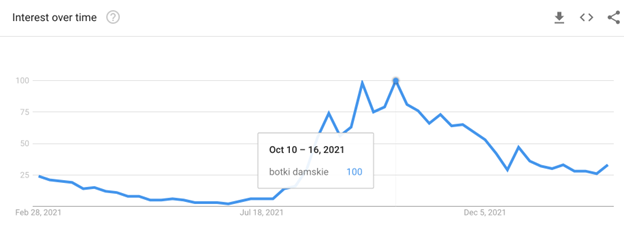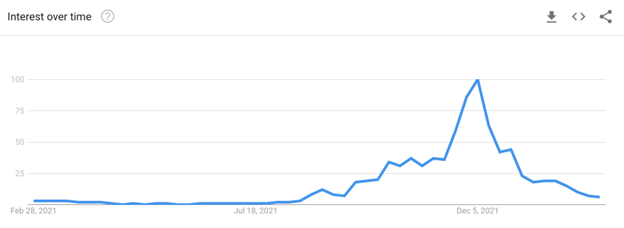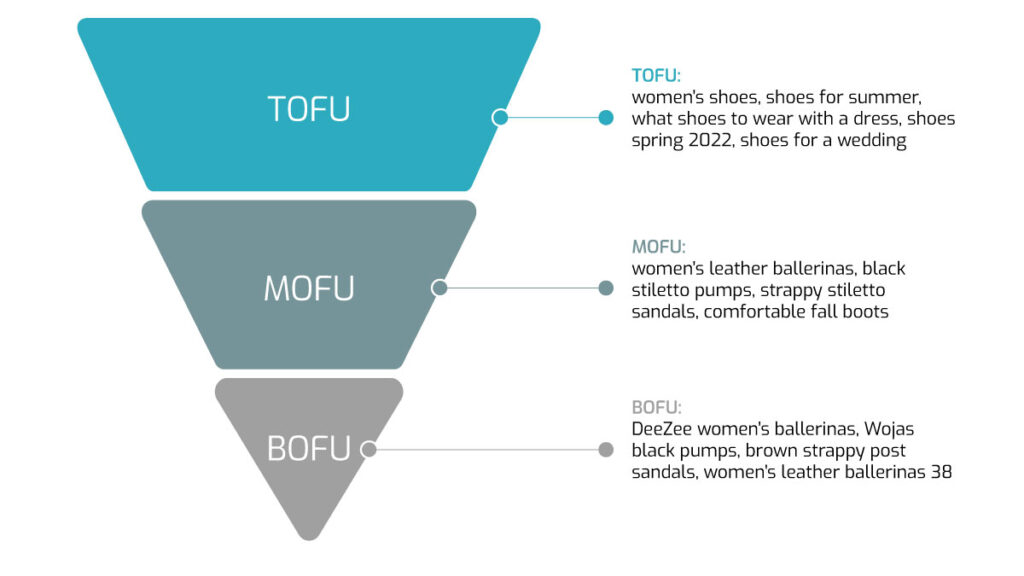Building an SEO strategy based on trends

A sound SEO strategy assumes organic traffic growth and is based on several fundamental principles. One of them is customization, which, when properly implemented and managed, is the key to success. User customization drives up sales, and that’s the most important reason to analyze recent trends and be visible right where the customer is searching for you. That said, there are several more compelling reasons to build a strategy around current research on user interests.
An invariable principle followed at Insightland is to analyze trends at least several months in advance. This analysis will not yield a comprehensive picture of the situation, as many trends emerge from day to day, which will not be reflected in the data from past periods. However, in many industries, it helps to better understand the seasonality of products and to set priorities so as to intensify efforts during the most lucrative period for the business. A good example is the footwear industry, where seasonality is an important factor, especially for stores offering products in a geographic area with a variable climate, such as Poland. In our country, the boundaries of the seasons are somewhat blurred, but the type of footwear that is typical of each season remains constant. One example is the “women’s boots” category which, according to Google Trends, sees the biggest peak in interest during the autumn period, especially from late September to mid-October:

By juxtaposing this knowledge with the data analyzed in Google Analytics and Google Search Console, we are able to plan activities in such a way as to achieve the highest positions in search results at the peak of interest, which will translate into an increase in ROI. The effects of activities performed in accordance with the results of the trend analysis are phenomenal, which is perfectly illustrated by the following charts. The first chart shows changes in interest for the selected seasonal phrase:

By preparing the strategy in advance and carrying out activities focused on maximum increases in the period from November to December, we achieved high values not only for the phrase being analyzed, but for the entire group of keywords associated with the positioned landing page.
In the chart below, we see data that relates to a single phrase only, also visible in the chart above. This means that the benefits to the customer (derived from positioning the entire landing page, not just one phrase) were much greater than these figures demonstrate.

Looking at the data captured in Google Analytics, one can’t help but notice that a year earlier, when the trend-based strategy was not implemented, the site reported 3 times fewer sessions for the analyzed landing page than in the year when the strategy was executed. Focusing on trends is a good approach, especially if the analysis is enhanced by the user’s journey and intent.
Effective planning of activities to not only improve Google positions, but also to increase the number of sessions and conversion rate is based not only on trend analysis, but also on user intent analysis. Aligning search results to what the customer wants to see when typing in specific keywords is essential to guide the customer encountered on the path to purchase through the stages of the sales funnel and lead to a transaction. The customer journey can be broken down into three stages: TOFU, MOFU and BOFU.
The first of these, TOFU (top of funnel) is the broadest, because at this level the user becomes aware of their needs and does their first online research. That’s why it’s so important to position blog and generic phrases with the greatest potential, because you can use them to extract a group of initially interested users and build brand awareness among them.
The next stage is the MOFU, or middle of funnel. This is the point at which the customer narrows down the search and considers a few pre-selected options.
BOFU (bottom of funnel) is the final stage reached by the most determined buyers. They are one step away from making a decision, they already have their preferences and needs clearly defined, and they know what products will meet their expectations. By knowing and analyzing the keyword phrases typed in by users, it is easy to locate the user and guide them through the customer journey. How users perform searches is illustrated in the chart below:

By analyzing keyword phrases in terms of intent, we can tailor the landing pages being positioned to what the user wants to see and what effect they are looking for. Focusing on the phrases through which viewers enter the website and determining their intent is very helpful – it improves the site’s visibility and conversion.
The two approaches discussed above will work perfectly for online stores with a recognized brand. However, these solutions are unlikely to succeed for smaller sites. Gaining a competitive edge can consume more time and money than e-commerce business owners might expect. That is why in such situations it is a good idea to rely on increased visibility for niche trends and ongoing monitoring of current interests in order to tap into their growing potential as quickly as possible. A thorough analysis of the available products and extracting the groups on which it is worth building online visibility, as well as checking them in tools that enable recognition of evolving trends will be very helpful in your SEO activities. A good example of using a niche trend in a clothing store is cargo pants, which have seen very strong growth over the past month:

The potential of this phrase surged from 6600 to 49500 from month to month, indicating a huge increase in interest in this product group recently. Capturing changes and responding quickly by focusing your efforts around particular keywords helps websites grow faster and build brand awareness among consumers. By taking a broad, holistic approach to trends, detecting nuances and space to improve positions, you can stand out and outperform your competitors in Google results for profitable, though not always obvious, key phrases. This measure should not be overlooked if the SEO strategy is supposed to bring real benefits to the business and translate into increased interest and product sales.